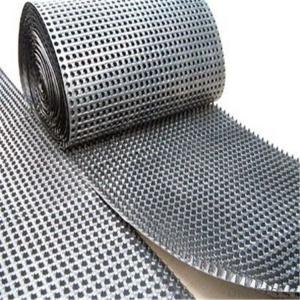Versatile Class C Geotextile: A Solution for Civil Engineering Projects In the construction and environmental projects that have been long associated with civil engineering, geotextiles have fundamentally transformed the way we go about them. Class C geotextiles are among various types of geotextiles that are recognized by their unique characteristics and uses. This article aims at shedding light on various aspects of class C geotextiles such as their features, benefits and how they can be blended into different projects to improve stability and strength.
What Are Class C Geotextiles Made Of?
Class C geotextile is a specific grade of geosynthetic materials designed for high tensile strength and durability. They may be made from polymers like polyester, polypropylene or polyethylene, which are interlaced or woven together into a fabric that can be adopted in many areas of civil engineering application. These textiles possess ability to bear high loads without deformation, which makes them ideal for use in projects requiring stability and reinforcement.
Role of Class C Geotextiles in Erosion Control
One primary usage of class Cegeotextiles is in erosion control. They serve as a barrier against water/wind washed away soil particles thereby maintaining the area’s structural integrity. This is critical especially in naturally disaster-prone areas with potential flooding or landslides where erosion risk is very high. By using such textile materials, engineers can create more resilient surroundings capable of better resisting natural forces.
Enhancing Drainage Systems
Another major application of class Cegeotextiles involves enhancing drainage systems. They aid the separation between different soil layers ensuring smooth flow through underlying structures without damaging them due to waterlogging conditions. This is important mainly in regions with poor drainage where water may collect causing instability within structures and even possible floods.
Class C Geotexntiles: Personal Experience
I was involved in a project where class Cgeotextiles were used to reinforce a slope. This area was prone to landslides, and after the application of these fabrics, the slope stabilized significantly. It was interesting to observe how such a simple material could have such a major effect on the success of the project. The geotextiles were easy-to-install and provided strong solutions against erosion and stability problems when installed.
The Benefits from Using Class C Geotextiles
There are many advantages that come with applying class Cegeotextile in construction engineering works. They are economical since they require less material as compared to conventional practices, besides being eco-friendly as they can be made from recycled materials. Additionally, they are user-friendly both for installation and maintenance purposes; hence reducing on overall labor cost and time expenditure in any project.
Challenges and Solutions
Even though there are several pros associated with Class C geotextiles, there is also some disadvantages linked with them. One such disadvantage is their need for proper installation so as to work effectively while others include temperature impacts or being exposed by ultraviolet radiation. However, all of these challenges can be dealt with through planning ahead, use of protective coatings and routine inspections or upkeeps.
The Future of Class C Geotextiles
As demand for sustainable and efficient building materials grows, the use of Class C geotextiles is expected to increase. With continued research and development, we can anticipate even more advanced applications for these fabrics in the future. They hold promise as key ingredients for creating more resilient and eco-friendly infrastructure.
In Conclusion
For a variety of civil engineering projects, class c geotextiles present a flexible and highly functional solution. Their capacity to provide erosion control, enhance drainage systems, and fortify structures makes them invaluable tools among engineers as well as construction experts. While striving to enhance durability and sustainability of our built environment by all means possible, it is obvious that class C geotextiles will always take the center stage in those efforts.







